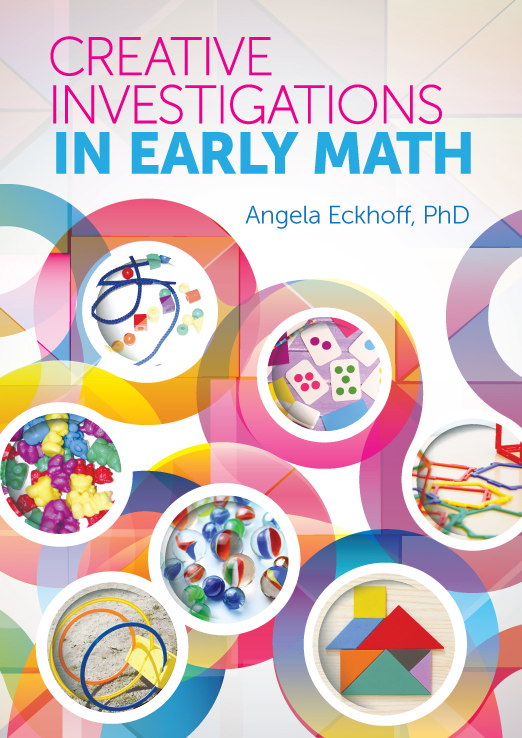Geometry is an important concept to explore for young children; it will help build and contribute to their understanding of shapes as they engage with shapes. As children begin to develop their spatial sense, they will learn to compare and manipulate mental images. Children must build their spatial awareness to themselves, the world and to their environment. More activities on geometry and spatial sense are included in the book, Creative Investigation in Early Math written by Angela Eckhoff, P.h.D.
Reproducing Shapes
Topic:
- Introduction to circles, triangles, rectangles, and squares.
Objectives:
- Children will create circles, triangles, rectangles, and squares.
- Children will name circles, triangles, rectangles, and squares.
Materials:
- Sand or shaving cream
- Individual trays
- Construction paper or cardstock shapes--circle, triangles, rectangles, and squares--in various sizes.
- Digital camera(optional)
Overview:
As both sand and shaving cream are used frequently in the classroom, this exploratory lesson will build on that familiarity and let children use their fingers to create circles, triangles, rectangles, and squares. Please note that children will likely want to freely explore the sand or shaving cream before and during this lesson, which is an appropriate and important part of their exploration.
Activity Steps:
- In advance, prepare a tray with sand or shaving cream for each child.
- Show the children the construction paper shapes, and invite them to name the shapes if they can. Introduce the name of each shape and talk about the properties of the different shapes.
- Lay out the example shapes on the tables where the children can see them. Tell the children that they will be looking at the shapes and that they can draw their own shapes in the sand or shaving cream on their own trays.
- Invite the children to draw the shapes with their fingers, and encourage them to talk the other children at their tables about what shapes they have drawn.
- As children are engaging with the materials, pose questions and work alongside them. You can support their inquiry by asking them if they can make certain shapes, what certain shapes are, and how they knew what the shapes were. Offer encouragement, and remind the children to name the shapes they make and see.
- Remember that the children do not need to stay focused only on shape making. Making other marks allows them to use creativity and imagination and will help them develop fine motor skills.
Instructions
. Engage the children in a conversation about farms. Ask the children to
describe what farms are for, who lives on farms, and what animals are
commonly found on farms.
2. Ask the children if any of them have ever been to a farm before. Ask the
children who have been on a farm to talk about the experience.
3. Set out the animal cutouts.
4. Hand out one animal cutout to each child.
5. Read Roger Priddy's On the Farm to the children.
6. Ask the children to hold up their animals when they are mentioned in the
book, and to imitate the sounds their animals might make. For example, cows
say "moo," pigs say "oink," ducks say "quack," and so on.
7. After reading the book, talk more with the children about the animals on the
farm. Challenge the children to remember and describe to you what the animals
were doing in the book, and invite the children to act out these behaviors.
Teacher - to - Teacher Tip s
* If you live in an area where farms are readily available, consider taking the
children on a trip to a local farm.
* Have the children remember the animals on their cutouts, set the cutouts
down, and then find all the other children who had been holding similar
animal cutouts by making the sounds of their animals.
Songs
"Old Mac Donald Had a Farm" "The Farmer in the Dell"
Assessment
Consider the following:
* Can the children identify their animals when the story mentions them?
* Do the children make the correct animal sounds?
